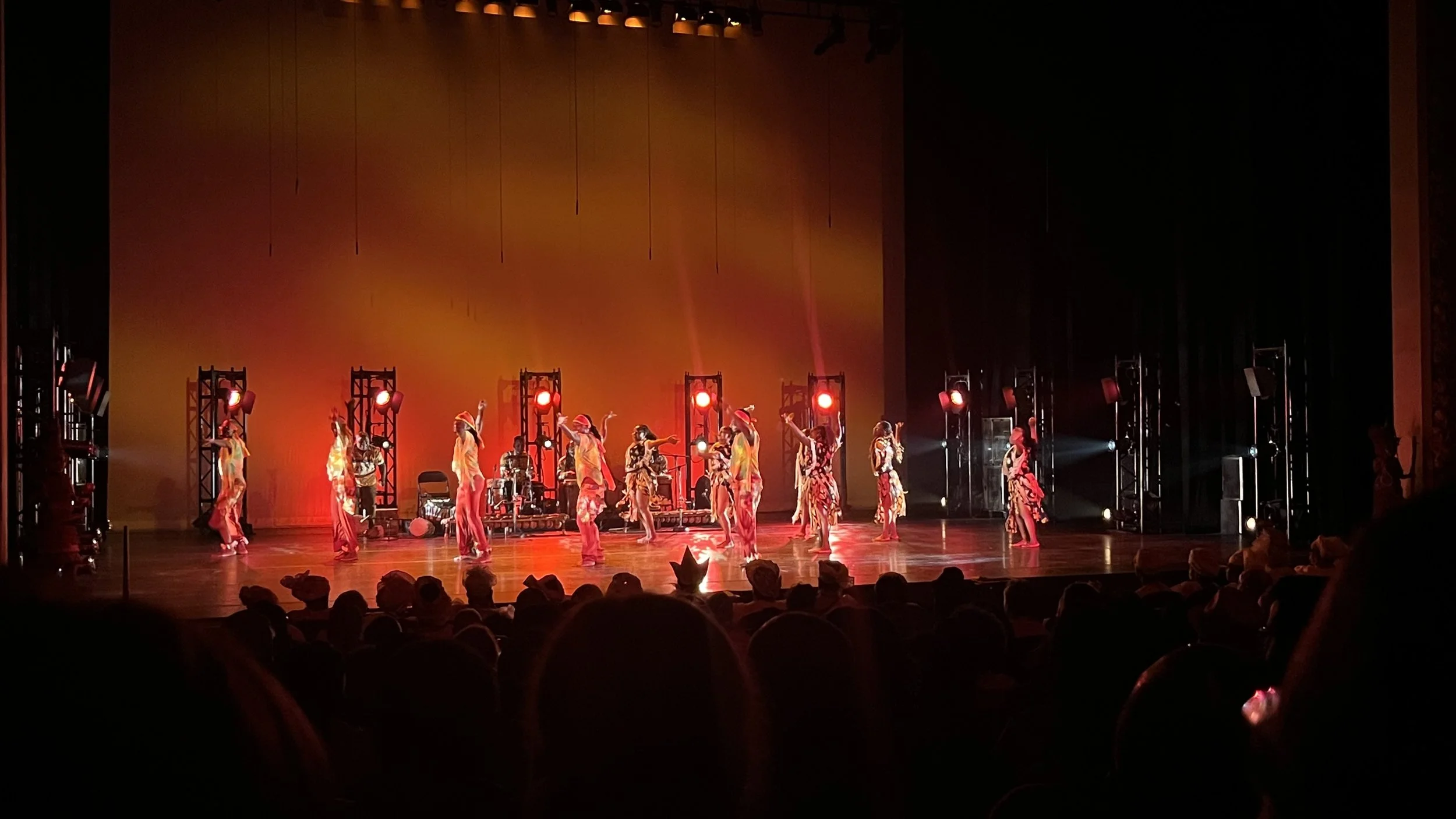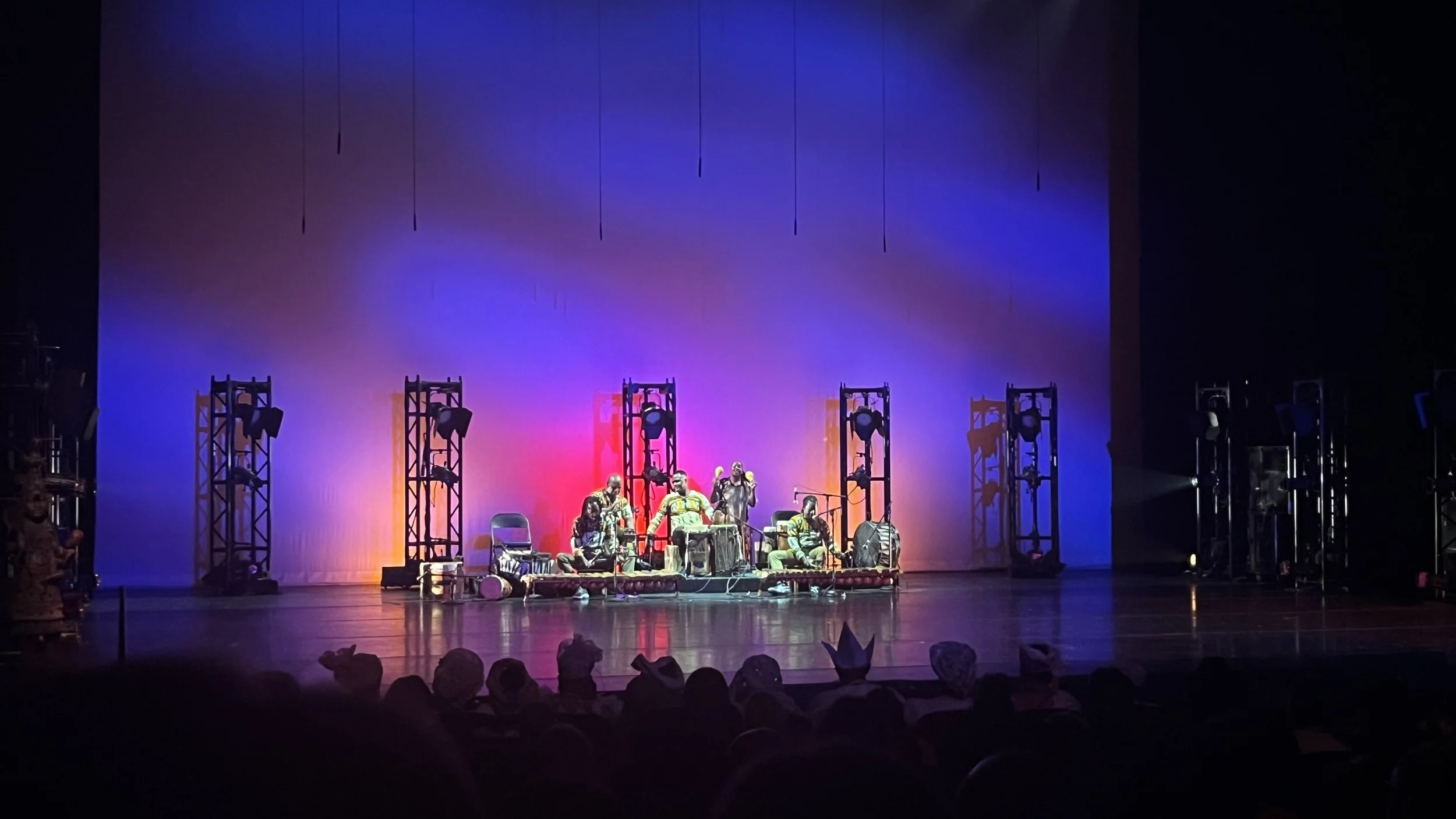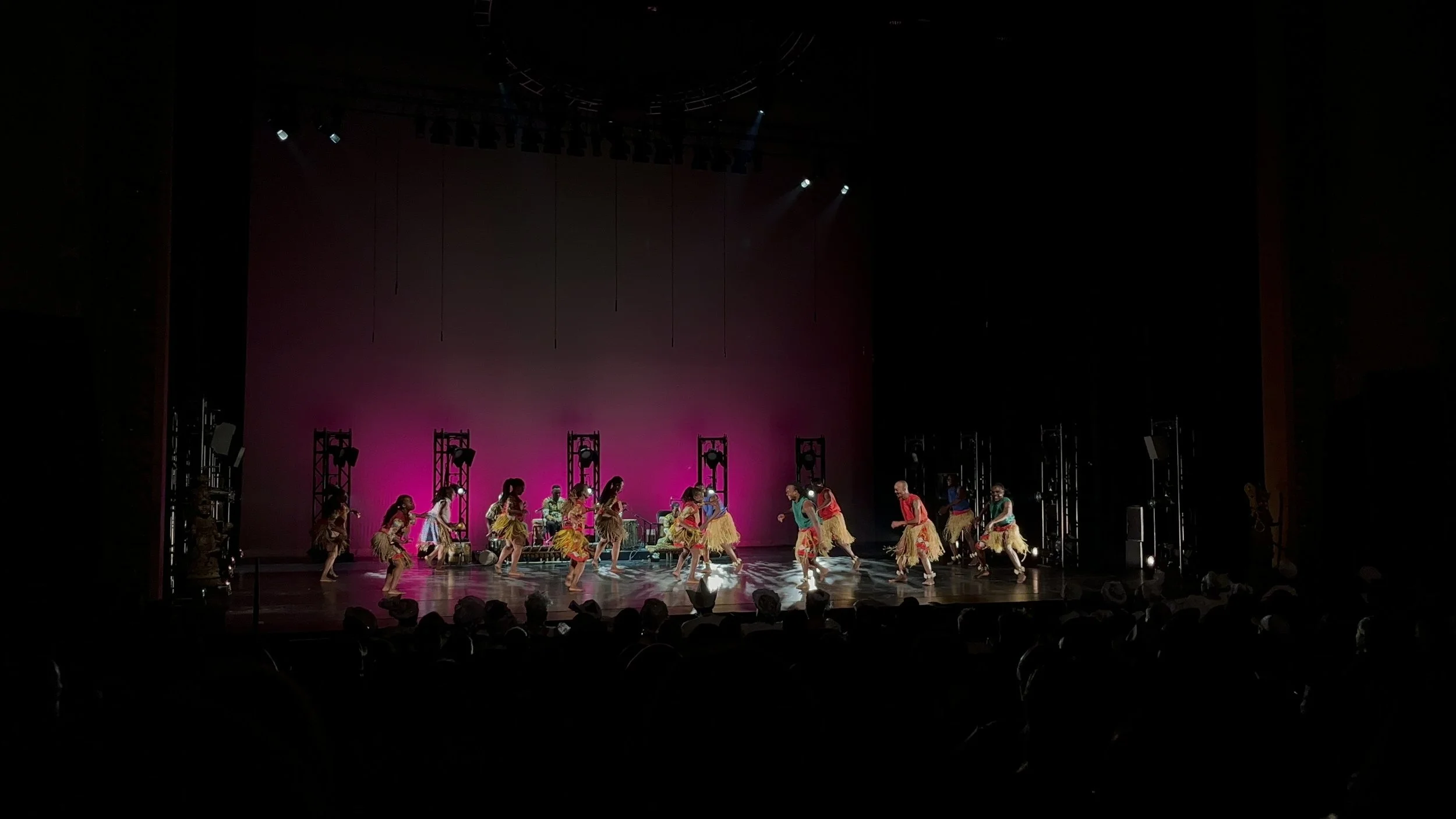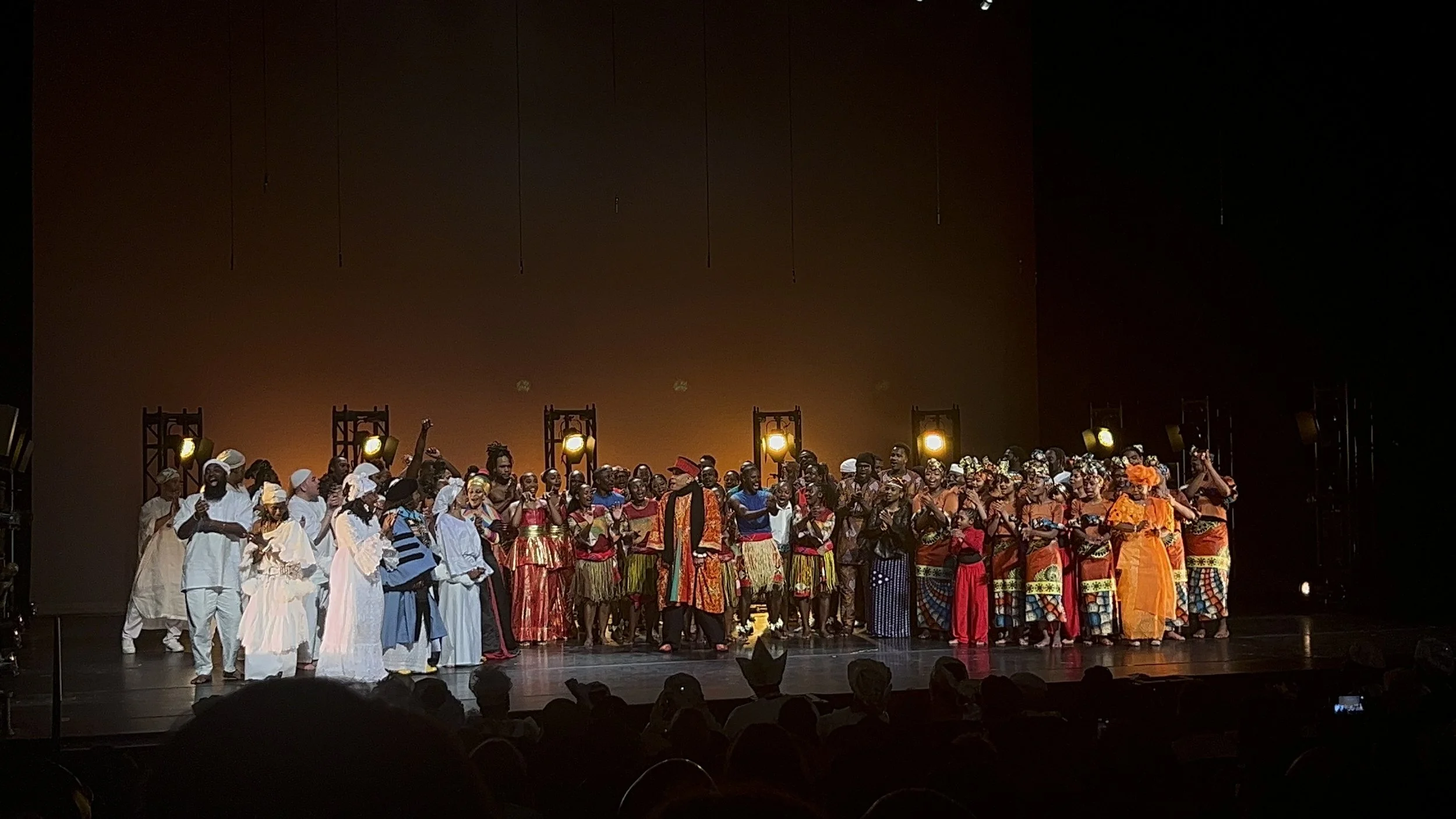DanceAfrica 2025: Celebrating Mozambique’s Spirit Through Movement, Magic, and Manifestation
Photo Credit: Rosa Matos
Every Memorial Day weekend, Brooklyn’s streets pulse with rhythm, color, and joy as DanceAfrica, the nation’s largest festival dedicated to African and diasporic dance, returns to BAM. Now in its 48th year, DanceAfrica 2025 centers its celebration around Mozambique: Movement! Magic! Manifestation!, a vibrant and powerful tribute to the cultural and spiritual traditions of Mozambique.
Running May 23–26 at the BAM Howard Gilman Opera House, this year’s main stage performance honors Mozambique’s rich legacy of resilience through movement and memory. Under the artistic direction of Abdel R. Salaam, the program features the internationally acclaimed Song & Dance Company of Mozambique, joined by Mama Coumba Saaraba, the DanceAfrica Spirit Walkers, and young dancers from The Billie’s Youth Arts Academy. Through traditional forms like Tufu, Xigubo, Ngalanga, Mapiko, and Nhau, the performance offers embodied archive of history and cultural survival. Plus, it’s truly a spectacle.
The selection of Mozambique as this year’s focus is particularly resonant. In 2025, the country will mark 50 years since its independence from Portuguese colonial rule, a victory achieved through organized resistance and a powerful belief in self-determination. This historical backdrop gives new depth to the festival’s celebration of art as a form of liberation — from the rhythm of drumming to the swirl of capulanas, Mozambique’s artistic practices carry stories that span generations.
Photo Credit: Rosa Matos
A Performance That Moved the Crowd
Our team member Rosa attended the premiere and shared this reflection:
“The performance was well-rounded — energetic choreography, powerful and demanding movements, colorful costumes, and outstanding live music came together beautifully. Between dances, AI-generated videos were used to provide context, but not all felt necessary. The first video, which included actual dancers, stood out for its seamless transition into live performance. The audience was completely engaged — clapping, cheering, fully present. It was a true gathering of community and spirit.”
Art, Spirit, and Storytelling with Cassi Namoda
This year’s festival also expands its visual art programming with a stunning installation by Mozambican artist Cassi Namoda, presented in collaboration with MoCADA. Her work, “At the breast, at the motherhood (the place where your mother originates),” brings together personal narrative, ancestral memory, and spiritual symbolism. Painted over time in her Upper West Side apartment, the piece draws inspiration from the intimacy of domestic life and the collective strength of African womanhood.
Namoda, whose creative practice is influenced by literature, folk art, and cinematography, spoke to how visual art, dance, and music all serve as extensions of one another in African societies:
“The African fabric of society is in its entirety a visual expression — whether through mediums like dance, music, or painting. Art and life are intrinsically related.”
Her collaboration with MoCADA, she noted, was “beautifully and serenely crafted,” and her aim with the installation is to speak a universal Pan-African language — one of belonging, pride, and presence.
In a live artist talk, Namoda reflected on themes of spirituality, connection to land and ancestors, and the idea of "gathered time" — the understanding in many African cultures that time is not about strict schedules but about presence, relationship, and rhythm. As Rosa noted afterward:
“I found this incredibly inspiring and kept thinking about it for the rest of the weekend. It reframed how I experienced the whole festival — it wasn’t about rushing from one event to the next, but being in the moment with people, art, and culture.”
Namoda also shared thoughts on black authorship, the importance of staying true to one’s vision, and the power of joy in her paintings. Rather than focusing on black pain, she draws from Susan Sontag’s The Pain of Others and seeks to create images that carry joy, peace, and connection — a healing counterpoint to trauma-based narratives. When asked what "home" means to her, her response was simple and profound: “Right now, home is my daughter.”
Portrait of Cassi Namoda, Visual Artist. Photography Andres Altamirano.
Interview with MoCADA Curator Amy Andrieux
We had the opportunity to interview curator of MoCADA, Amy Andrieux, ahead of the festival and asked her about how DanceAfrica 2025 came to be, and what it means for the community.
MoCADA has such a rich legacy of amplifying African diasporic voices — how did the collaboration with DanceAfrica 2025 come about, especially with Cassi Namoda?
BAM and MoCADA have long shared a neighborhood, but most recently, since taking occupancy at L10 Arts and Cultural Center, our organizations are now building mates. Before moving in, BAM, MoCADA, and the remaining two L10 organizations (Brooklyn Public Library and 651 Arts) crafted a list of shared values to enable and sustain collaboration across our organizations and across disciplines to build more dynamic programming within this district.
MoCADA's collaboration with BAM for DanceAfrica was born from this community mindset, and I'm super thankful that Charmaine Warren and Coco Killingsworth thought of MoCADA when they sought out new partners for the festival.
This year's focus on Mozambique arrives as the country nears 50 years of independence. How did that historic milestone shape your curatorial lens?
Mozambique, like many African nations and countries in the Caribbean, is being challenged to re-envision what independence means today as opposed to being defined by outdated systems or the influence of colonial powers that have colored the possibilities for people on the ground for too long. Like my family's home country, Haiti, I believe this moment is calling for reclamation and healing, and that deserves a reflective pause, a return to where we all began – in the embrace of our humanity.
DanceAfrica is such a multisensory experience. How do you see visual art expanding the conversation around dance, resistance, and cultural memory?
I'm a native New Yorker, so DanceAfrica has always been two things for me: the kickstart to Brooklyn summers, and a place where the African Diaspora can come together and celebrate our multiplicity in unison.
Koyo Kouoh, the celebrated curator who recently passed, once said that art is a spiritual social science, and I believe that. art, in all of its forms, is the driving force of connection; how we connect with each other and with nature, how we tell our stories and find meaning in our lives, how we cultivate a sense of belonging, and the rituals we keep to experience art in real time or preserve it for future generations. Whether in the physical form or as psychic memory, we carry these connections with us and they become fuel for the next leg of life's journey.
As a curator, how do you balance honoring traditional elements while encouraging contemporary reinterpretation, especially in diasporic spaces?
The Ghanian (Akan) principal of Sankofa is at the root of my practice. It's the idea that one must look back before moving forward, and I love the idea that my work, our collective work, is generative. We're always building on top of the path that our ancestors carved for us. So as a curator, educator, and artist, I'm always looking to ground my work as part of this Afro diasporic continuum, connecting the dots between cultures while finding the through line between what happened, what's happening, what may/can happen in the future, and the agency we collectively share to dream and manifest a truly liberated reality.
What do you hope young artists and attendees take away from seeing Cassi’s work in this setting?
Firstly, we have always been a matriarchal people, Our mothers and grandmothers are the center of our universe, and I'm grateful for the lineage. Secondly, in this moment of global political and cultural polarization, I hope that people are reminded that they are nurtured, they are loved, and that they are seen, in spite of the external chaos trying to convince them of otherwise.
Amy Andrieux
Festival Beyond the Stage
DanceAfrica 2025 is a full cultural experience beyond the performance. The DanceAfrica Bazaar, held May 24–26, transforms the streets around BAM into a lively marketplace featuring over 200 vendors. Dance classes, community day events, and FilmAfrica, curated by the African Film Festival, invite audiences into deeper engagement with African and diasporic cultures.
Other highlights include:
May 17: Tribute to the Ancestors & Community Day
May 21: Artist Talk with Cassi Namoda at MoCADA
May 22: The Memorial Room
May 24: Late Night Dance Party
May 25: Council of Elders Roundtable
Ongoing: DanceAfrica and the BAM Hamm Archives
This year, DanceAfrica offers not just a celebration of Mozambican culture, but an invitation: to connect, to reflect, and to honor the power of cultural expression as a living, breathing legacy. Whether through dance, visual art, or film, DanceAfrica 2025 is a reminder that the past moves with us — and that joy, resistance, and creativity continue to shape the future.
For tickets, event registration, and the full lineup, visit BAM.org.
Photo Credit: Rosa Matos



















